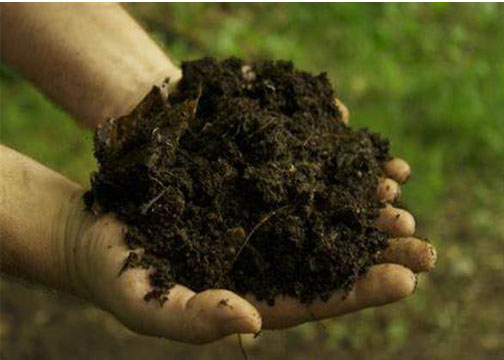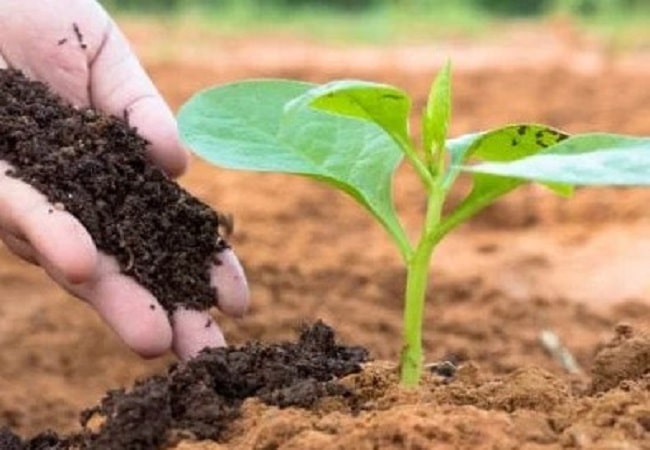Applying compost to a garden is an excellent way of replenishing the soil with beneficial organic matter that can improve soil structure, fertility, and overall health. How to apply compost to a garden requires proper knowledge and techniques to ensure maximum benefits.
One of the primary considerations when applying compost is timing. It’s recommended to apply compost during spring or autumn when temperatures are mild and plants are actively growing. Before adding new compost, wait until the soil has warmed up enough after winter.
This ensures that all parts of your garden have equal access to nutrients while avoiding smothering young plants. Additionally, consider incorporating the compost into your soil by tilling or digging if you’re working with heavy clay soils or want faster results from your application. This article will inform us how to apply compost to a garden.
Quick Navigation
Choose the Right Compost how to apply compost to a garden

Compost is an ideal way to improve soil fertility and structure, making it an ideal choice for gardeners who want to grow healthy and robust plants. However, not all compost is created equal, and choosing the right type for your garden can make a significant difference in the success of your plants. Here are some tips to help you choose the right compost for your garden:
Know your soil type: Different types of compost are best suited for different soil types. For example, if you have heavy clay soil, you will want compost rich in organic matter and able to break down the clay particles. If you have sandy soil, you will want compost that can help retain moisture and nutrients.
Consider the source: Compost can be made from various organic materials, including leaves, grass clippings, food scraps, and manure. Make sure to choose compost from a reliable and safe source. Avoid compost that contains weed seeds, pesticides, or other harmful substances.
Look for a balanced nutrient profile: Compost should contain a balance of nitrogen, phosphorus, and potassium, as well as other micronutrients. Look for compost that has been tested and certified for its nutrient content.
Check the pH: Compost should have a neutral pH of around 7.0. Avoid too acidic or alkaline compost, as it can harm plants.
Consider the texture: Compost should have a crumbly, soil-like texture that is easy to work with. Avoid dry or wet compost, as it can affect plant growth.
Considering these factors, you can choose the suitable compost for your garden and give your plants the best chance to thrive.
Prepare the Compost

Composting breaks down organic matter such as food scraps, yard waste, and other organic materials to create a nutrient-rich soil amendment. Here are the steps to prepare compost:
Choose a compost bin
Many different types of compost bins are available for purchase, or you can build your own using wood pallets, wire mesh, or other materials.
Collect materials
Mix “green” and “brown” materials, including food scraps, grass clippings, and coffee grounds. Brown materials include dry leaves, shredded paper, and straw. Add small amounts of wood ash, eggshells, and animal manure.
Layer the materials
Start with a layer of brown materials at the bottom of the bin, then add a layer of green materials. Continue layering the materials until the container is full.
Water
The compost pile should be damp but not too wet. Add water as needed to keep the materials moist.
Turn the pile
Use a garden fork or shovel to mix the materials and add air every few days. This will help speed up the composting process.
Monitor the compost
Check it regularly to ensure it is moist and turning into a dark, crumbly material. If it’s too dry, add water. If it’s too wet, add more brown materials.
Harvest the compost
After several months, the compost should be ready to use. You can use it to enrich your garden’s soil or potted plants. Use a screen or sifter to remove large pieces that haven’t fully broken down.
Composting is a great way to reduce waste and create a valuable soil amendment for your garden.
Apply the Compost with soil in the garden

Applying compost to the soil in your garden is a great way to improve your plants’ overall health and productivity. Compost is a rich, organic material from decomposed plant matter, such as leaves, grass clippings, and kitchen scraps. It is an excellent source of nutrients for your plants, helps to retain moisture in the soil, and can even help to suppress certain diseases and pests.
To apply compost to your garden soil, you must first prepare the area by removing any weeds or other debris. Then, you can spread a layer of compost over the soil, working it into the top few inches. This will help to ensure that the nutrients are evenly distributed throughout the soil, where your plants can absorb them.
If you have a large garden, consider using a compost spreader to make the process more efficient. These machines can be rented or purchased from most garden centers and are designed to distribute compost evenly over a large area.
Once you have applied the compost, it is important to water the area thoroughly to help the nutrients soak into the soil. You may also want to consider adding a layer of mulch over the compost to help retain moisture and prevent weed growth.
Applying compost to your garden soil is a simple and effective way to improve the health and productivity of your plants. With regular applications, you can help create a thriving garden that will provide fresh, healthy produce for years to come.
Watering Instructions
It’s essential to water your garden properly after applying compost. Watering helps the compost settle into the soil and encourages it to release its nutrients. Your garden’s water depends on several factors, including soil type, temperature, humidity level, and rainfall. You should water your garden deeply once a week rather than giving it frequent shallow sprinklings.
When watering your garden after applying compost, aim to moisten the top six inches of soil. This will ensure that the roots can access the nutrients in the compost. You can use a hose or watering can with a nozzle that provides gentle rainfall-like coverage to avoid washing away any newly applied compost or disturbing delicate seedlings.
Remember not to overwater your garden, which can cause root rot and other fungal diseases. Also, different plants have varying watering requirements; some require more frequent and consistent watering, while others prefer drier conditions. Following these simple watering instructions after applying compost to your garden, you’ll be well on your way to cultivating healthy and thriving plants!
How Often Should I Apply My Compost?
When it comes to applying compost in your garden, timing is critical. Using too much or too little can lead to poor results. Applying compost once or twice a year is recommended – in the spring before planting and in the fall after harvesting. However, you may need to adjust these timings based on your unique garden and soil conditions.
It’s essential to do what is necessary with compost application since this can lead to nutrient imbalances and excessive plant growth. A good rule of thumb is to apply at most one inch of compost per season, roughly 30-40 pounds per 100 square feet of garden space. Be sure to thoroughly work the compost into the soil for the best results.
Remember that quality matters as much as quantity when composting. A high-quality compost from diverse organic materials will deliver more benefits than an inferior product lacking nutrients and diversity. So invest in a good quality source of compost for optimal results.
Frequently Asked The Question
Can You Put Compost Straight Into The Garden?
Dispensing with compost bins simplifies composting even further. It saves time and effort to bury the compost in the garden itself. Traditional composting techniques are just as effective for fertilizing vegetable plants.
When Should I Apply Compost To My Garden?
Compost can be applied at the season’s end or the beginning of the next. One advantage of compost is that it gradually releases nutrients over time, unlike the rapid release of nutrients found in water-soluble artificial fertilizers.
Do You Put Compost Under Or Over Soil?
Layer the compost heavily over the bare soil. Worms and other organisms aid the incorporation of the compost into the soil. Mulching is not only a convenient method of applying compost but also suppresses weed growth and aids in water retention in the soil.
Do You Just Keep Adding To the Compost?
Don’t add any more ingredients after the initial batch has been mixed. Composting typically takes three to six months, depending on the pile’s temperature. The process can be sped faster if the material is shredded before being added to the pile and if the pile is aerated more frequently.
How Long To Leave Compost On Soil?
When will the compost pile be ready? Composting in a garden might take anywhere from six months to two years. The finished compost will be a dark brown color, with a texture similar to crumbly dirt and a fragrance reminiscent of a wet forest floor.
Conclusion
Applying compost to a garden is an excellent way to improve soil quality and ensure healthy plant growth. It provides your plants with the essential nutrients they need while also helping retain moisture in the soil. However, it’s important to note that not all types of compost are created equal, so choosing the right type for your specific needs is crucial.
When applying compost to your garden, apply it evenly across the entire area and thoroughly work it into the soil. This will help ensure that all your plants receive the necessary nutrients for optimal growth. Additionally, remember that compost should be added regularly throughout the growing season as needed.

My name is Md Deloar Hossain and I’m the creator of Club Gardening, designed for all your gardening ideas, gardening product reviews, and a place to help you find the best gardening experience possible.


